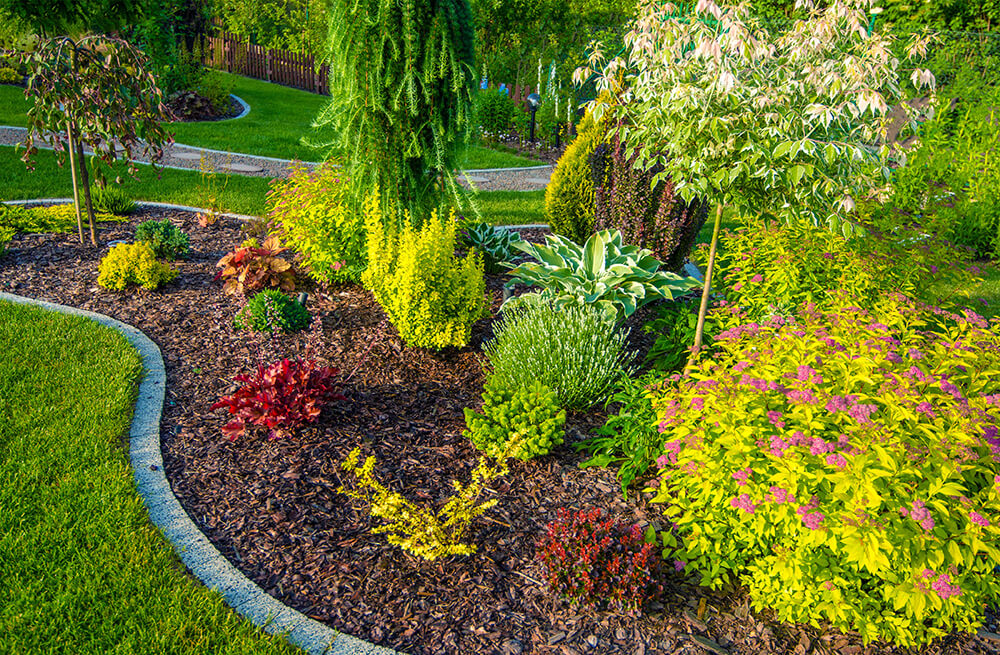Last month, we discussed gardening tools – how to select and use the right ones for your do-it-yourself landscaping needs. What we didn’t address were foundational landscaping materials – what they are, why you need them, and how and when to use them. So that’s this month’s gardening tip.
If you’re starting from scratch – creating new flowerbeds or planting new trees – then you’ll probably need to use most if not all of the materials listed below. If, on the other hand, you’re in maintenance mode, you may only need a couple materials we’ll be discussing. Regardless, we want to share the importance of each so you get the best possible results.
Soil
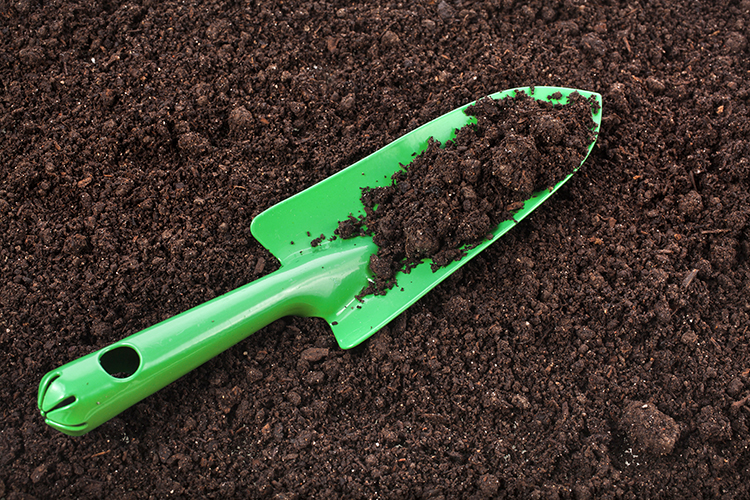 Soil is foundational to everything landscaping-related. The naturally occurring soil in your area may be clay-based. Clay holds onto water, which can promote poor drainage and lead to root rot in plants and trees.
Soil is foundational to everything landscaping-related. The naturally occurring soil in your area may be clay-based. Clay holds onto water, which can promote poor drainage and lead to root rot in plants and trees.
On the other end of the spectrum, some areas have naturally silty or sandy soil. This tends to drain a little too well, making it difficult to keep plants adequately watered.
For most vegetation, loamy soil – a blend of the three soil types mentioned above – is preferred. Loam offers the best of all worlds, maintaining a more consistent moisture level over time and requiring little to moderate watering depending on weather conditions.
Struggling with your existing soil because it’s too sandy, silty, clay-based, or lacks the necessary nutrients? You can amend your soil by adding peat moss, manure, fertilizer, or compost as appropriate.
Mulch
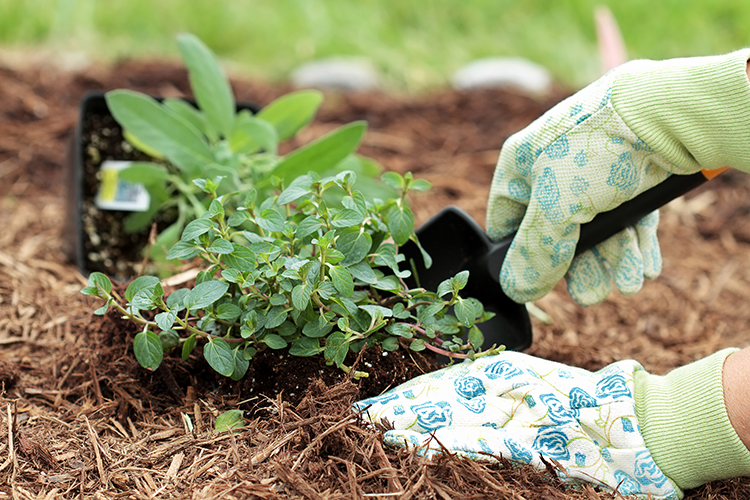 There are various types of mulch, including rustic options like straw, grass clippings, and shredded leaves. Some gardeners are even using newspaper as most of them are printed with neutrally-derived inks.
There are various types of mulch, including rustic options like straw, grass clippings, and shredded leaves. Some gardeners are even using newspaper as most of them are printed with neutrally-derived inks.
Pine needles can also be used as mulch and are especially effective around plants that require additional acid in soil. However, they are quite dry and small, so they’re not great at suppressing weeds and maintaining moisture.
The type of mulch that we use and recommend is made from bark. It’s an excellent choice for weed suppression and moisture retention. Above all other reasons, many people use it simply because it significantly improves the appearance of their gardens. Cedar and pine bark are excellent if you’re looking for a natural appearance. Hardwood mulch comes in various colours that you might opt for if you want to colour-match with your home’s exterior.
Stone
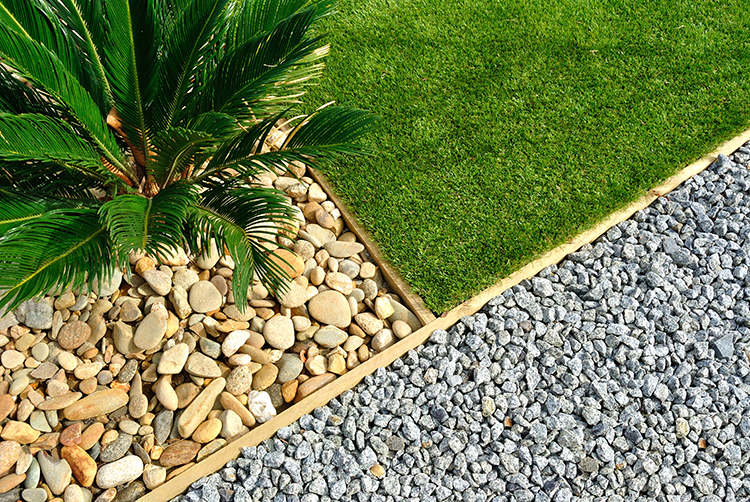 Stone has multiple applications in landscaping. Natural stone can be used with landscape fabric in place of mulch to suppress weeds and help retain moisture. Large natural rocks can be used as standalone sculptures and can even be made into water features. And of course, flat stone like flagstone is a great natural option for walkways, stairs, and patios.
Stone has multiple applications in landscaping. Natural stone can be used with landscape fabric in place of mulch to suppress weeds and help retain moisture. Large natural rocks can be used as standalone sculptures and can even be made into water features. And of course, flat stone like flagstone is a great natural option for walkways, stairs, and patios.
Pavers are engineered stone also used for walkways, stairs, and patios. But the advantage is that pavers are easier to work with because of their consistency in thickness, size, and shape. This in addition to the variety of colour options and patterns means it gets chosen more often than flagstone.
Sand
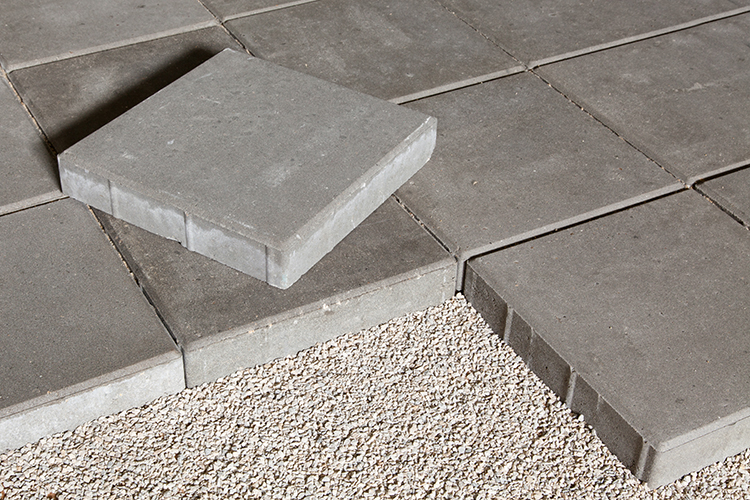 Sand is an aggregate that’s most often used as a foundation for stone and pavers. It’s typically a combination of granular A gravel, sand or high-performance base stone.
Sand is an aggregate that’s most often used as a foundation for stone and pavers. It’s typically a combination of granular A gravel, sand or high-performance base stone.
If the aforementioned sand is at one end of the spectrum, then Polymeric Sand is at the other end. Primarily comprised of quartz silica, crystalline silica, and polymer (hence its name), Polymeric Sand is used to fill paver joints. Unlike regular sand, Polymeric Sand is activated when it comes in contact with water, providing a secure bond with pavers. It also greatly reduces weed and ant infestations.
So those are the basic landscaping materials. There are various others like soil amendments such as compost, peat moss, manure, and fertilizer. And landscape fabric can be used to keep weeds down and edging helps create clean lines between hardscaping, softscaping, and turf.
A final note about where to source your soil, sand, stone, and mulch: often times, you get what you pay for, so buy from a reputable retailer and consider these materials an investment. You don’t have to purchase the most expensive products, but you should base your decision solely on price or you might not get the best value for your money.
Contact us if you’d like to spend more time enjoying your landscaping and less time working on it.

